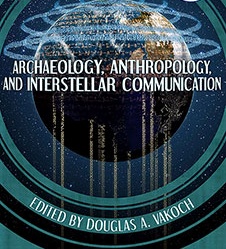NASA kills SETI e-book showing aliens helped human civilisation
26 May 2014
US space agency NASA has pulled out an e-book that hinted at the presence of aliens from other planets on earth in the past. The e-book Archaeology, Anthropology and Interstellar Communication, which was issued earlier this week, has details about the efforts in the search for extra-terrestrial beings.
 The book produced by of NASA arm SETI (Search for Extra-terrestrial Intelligence), well known to watchers of Hollywood movies and American TV shows. But it was taken down by NASA's administrators without explanation.
The book produced by of NASA arm SETI (Search for Extra-terrestrial Intelligence), well known to watchers of Hollywood movies and American TV shows. But it was taken down by NASA's administrators without explanation.
The 330-page book - edited by the director of interstellar message composition at SETI, Dr Douglas Vakoch – suggests that uncommon prehistoric patterns cut into rocks "might have been made by extraterrestrials," virtually echoing the views expressed by the well-known sci-fi writer Arthur C Clarke in some of his novels.
Although it has been yanked off the e-book shelves, many say it is an eye-opener, saying among other things that the Rosetta Stone – which was the key to understating Egyptian hieroglyphics – as well as other ancient leftovers such as England's Stonehenge or the famed Inca and Aztec structures in South and Central America – were inspired by aliens.
SETI is entrusted with investigating ways that alien civilizations may use to make messages, which could be communicated across interstellar space, permitting communication between human beings and extra-terrestrials even without face-to-face interaction.
In the book's introduction, Douglas Vakoch said that scientists must try to "recognize manifestations of extra-terrestrial intelligence, even when they resemble a naturally occurring phenomenon".
Computer scientist William Edmondson, who also contributed to the book, wrote: "It is helpful to review some parallels from human existence that pose problems for us today. One of these is 'rock art,' which consists of patterns or shapes cut into rock many thousands of years ago."
He added, "We can say little if anything about what these patterns signify, why they were cut into rocks, or who created them. For all intents and purposes, they might have been made by aliens. Unless we find a readable exegesis of them produced at the time they were made, we will never be able to say with certainty what the patterns mean."
People working in the field often advocate use of rock art as an analogy for understanding the challenge of connecting over vast distances of time and space.







.webp)
















